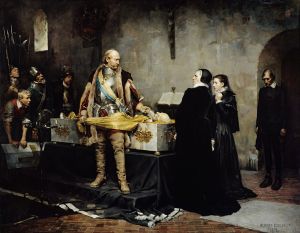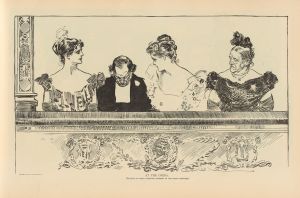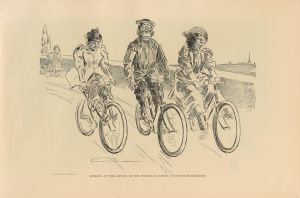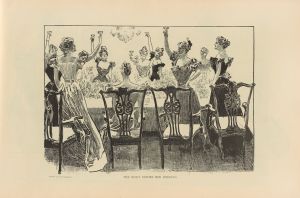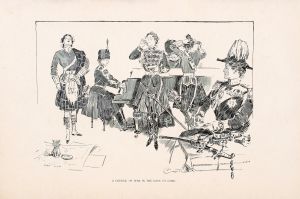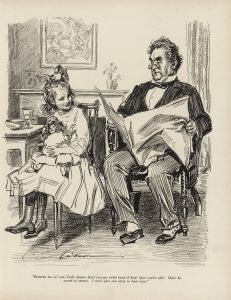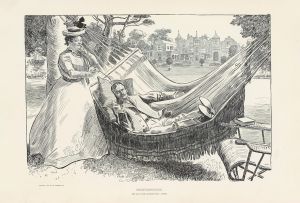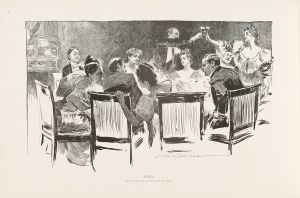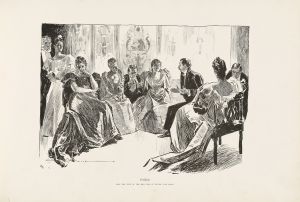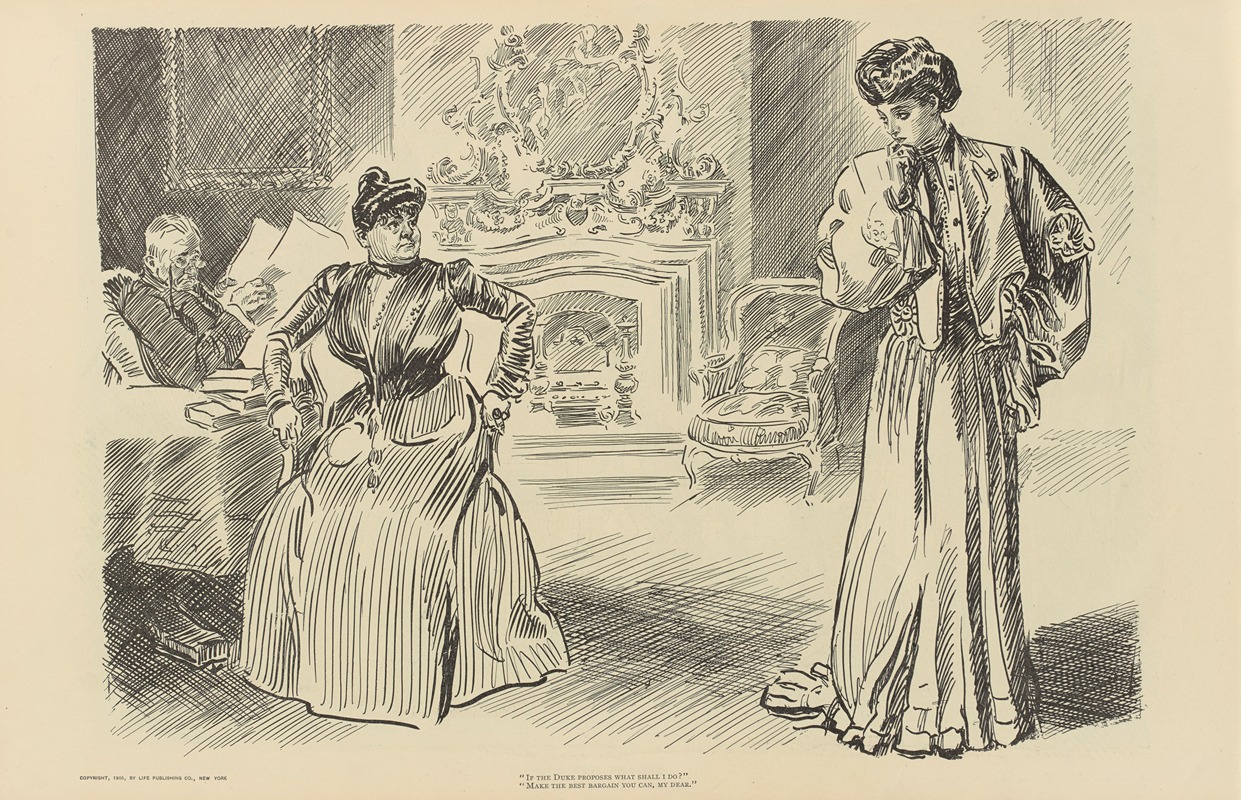
‘If the Duke proposes what shall i do’
A hand-painted replica of Charles Dana Gibson’s masterpiece ‘If the Duke proposes what shall i do’, meticulously crafted by professional artists to capture the true essence of the original. Each piece is created with museum-quality canvas and rare mineral pigments, carefully painted by experienced artists with delicate brushstrokes and rich, layered colors to perfectly recreate the texture of the original artwork. Unlike machine-printed reproductions, this hand-painted version brings the painting to life, infused with the artist’s emotions and skill in every stroke. Whether for personal collection or home decoration, it instantly elevates the artistic atmosphere of any space.
Charles Dana Gibson was an influential American illustrator, best known for his creation of the "Gibson Girl," a representation of the idealized American woman at the turn of the 20th century. His works captured the social dynamics and cultural norms of his time, often with a touch of humor and satire. One of his notable illustrations is "If the Duke Proposes, What Shall I Do?" which reflects his keen observation of societal expectations and the roles of women during the Edwardian era.
"If the Duke Proposes, What Shall I Do?" is a black-and-white illustration that showcases Gibson's signature style, characterized by detailed line work and expressive characters. The illustration typically features a young woman, elegantly dressed, surrounded by a group of admirers or in a social setting that suggests a romantic or matrimonial context. The title itself poses a rhetorical question, hinting at the societal pressures and expectations placed upon women to marry well, particularly to someone of noble standing like a duke.
Gibson's work often highlighted the tension between personal desires and societal expectations. In this illustration, the central female figure embodies the "Gibson Girl" archetype: confident, independent, and attractive. She is depicted in a moment of contemplation or decision-making, which was a progressive portrayal for women at the time, suggesting that they had agency and choice in matters of love and marriage.
The "Gibson Girl" became a cultural icon, representing a new standard of femininity that was both aspirational and attainable. She was athletic, educated, and socially active, a departure from the more demure and domestic ideals of previous generations. Through his illustrations, Gibson subtly critiqued the rigid social structures and encouraged a more modern view of gender roles.
Gibson's illustrations were widely published in magazines such as Life, Harper's Weekly, and Scribner's, reaching a broad audience and influencing public perceptions of beauty and femininity. His work not only entertained but also provoked thought and discussion about the evolving roles of women in society.
"If the Duke Proposes, What Shall I Do?" is a testament to Gibson's ability to capture the zeitgeist of his era. It reflects the complexities of social interactions and the evolving status of women, making it a significant piece in the study of early 20th-century American art and culture. The illustration remains a valuable artifact for understanding the historical context of gender dynamics and the power of visual media in shaping societal norms.
Overall, Charles Dana Gibson's work, including "If the Duke Proposes, What Shall I Do?" continues to be celebrated for its artistic merit and its insightful commentary on the social issues of his time.





